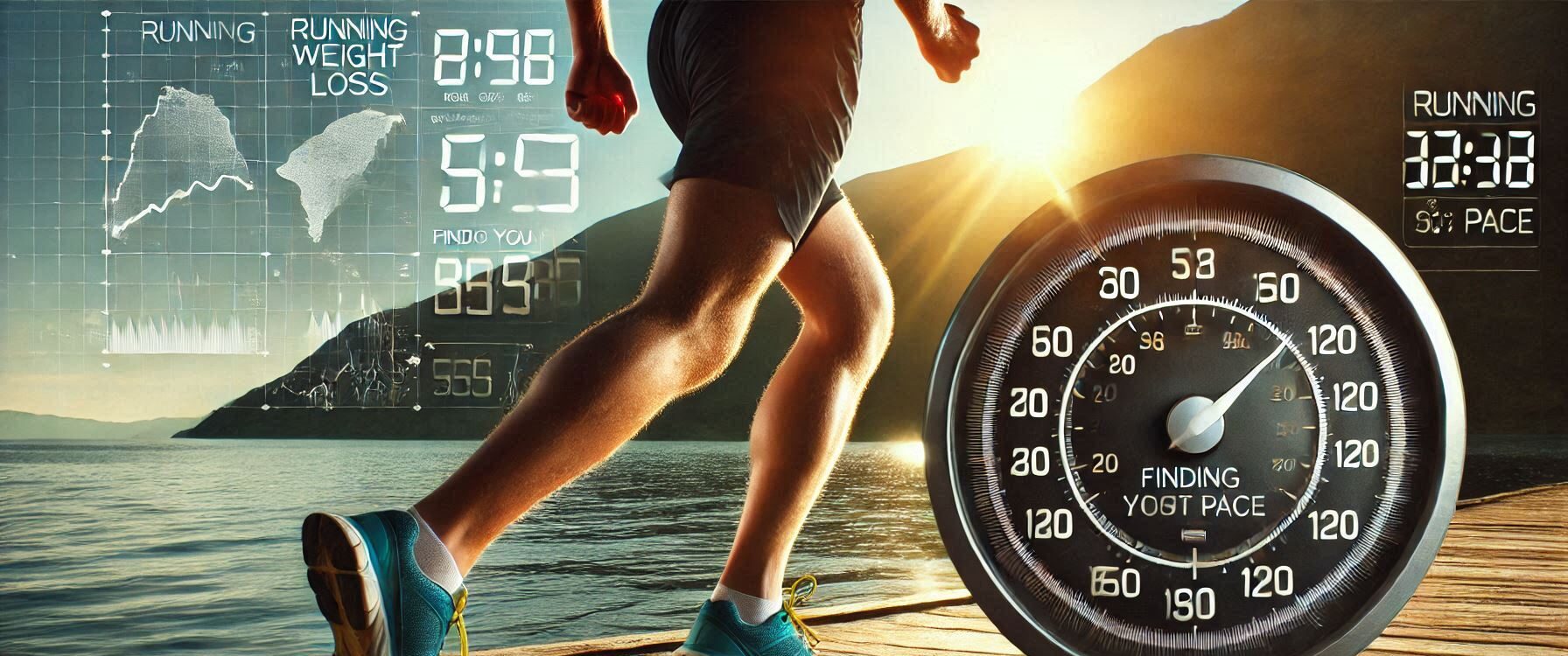Top Takeaways and Key Concepts
Set realistic running goals: Start with achievable milestones, like jogging around the block, then gradually increase distance.
Track progress: Use apps or journals to monitor improvements in distance, speed, and non-numeric feedback like mood.
Fuel properly before and after runs: Choose nutrient-dense foods, such as carbs before runs and protein after, for optimal performance.
Listen to your body: Avoid pushing through pain; rest when necessary to prevent injuries and allow recovery.
Celebrate milestones: Acknowledge small achievements to keep motivation high and reward yourself for progress.
Summary of This Article
Please Note: This post may contain affiliate links. If you click one of them, we may receive a commission at no extra cost to you. As an Amazon Associate, I earn from qualifying purchases.
The article provides essential advice for using running as an effective weight-loss tool. It emphasizes the importance of setting realistic goals, starting small, and gradually building up your running routine. Tracking progress through apps or journals and celebrating milestones helps maintain motivation. Nutrition plays a significant role, with a focus on fueling with the right foods before and after runs. The article also stresses the importance of listening to your body, incorporating rest days, and reflecting on progress regularly to stay on track.

Let’s talk about running. You know, that activity that seems to involve a lot of sweat, heavy breathing, and the occasional existential crisis when you realize you’re still only on mile one. But here’s the thing: running can actually be your best friend in the quest for effective weight loss.
Yes, really! It’s like finding out that broccoli is secretly delicious when roasted with garlic (and who knew?). So, let’s lace up those shoes and explore how to use running as a powerful tool for shedding those extra pounds!
Setting Realistic Goals

First off, we need to chat about goals because let’s face it—if your goal is to run a marathon tomorrow after spending the last year on your couch binge-watching cat videos, we might have a problem. Setting realistic goals is crucial! Start small and build up from there. Maybe aim for a short jog around the block instead of trying to outrun a cheetah.
I remember my first attempt at jogging was more like an awkward shuffle interspersed with walking breaks while I mentally calculated how many donuts I could eat later if I kept this up. Spoiler alert: it didn’t end well. Instead of focusing on unrealistic expectations, celebrate every little victory along the way. Did you make it an extra minute without stopping? Bravo! That’s progress worth celebrating—preferably with some non-donut snacks.
Setting Realistic Goals When Running for Weight Loss
Let’s talk about running and weight loss, shall we? If you’re anything like me, your first thought might be something along the lines of “I’ll just run a marathon next week and lose all the weight!” Spoiler alert: that plan will not end well. Setting realistic goals when it comes to running for weight loss is crucial if you want to avoid becoming a cautionary tale told at gym gatherings.
So, grab your favorite pair of running shoes (preferably ones that don’t smell like old gym socks), and let’s dive into how to set those goals without losing our minds—or our lunches.
Understanding Your Starting Point

Before you can set any goals, it’s essential to understand where you're starting from. Are you a seasoned runner who could easily outrun a gazelle, or are you more of a couch potato contemplating life choices while staring at the television? Honestly, we’ve all been there! The key is to assess your current fitness level honestly—this isn’t the time for bravado or self-deception.
When I first decided I was going to become “a runner,” my only experience with running involved chasing ice cream trucks as a child. I quickly realized that sprinting after frozen treats didn’t quite prepare me for hitting the pavement in an actual workout. So take stock of what you can realistically do now. Can you jog for two minutes without feeling like you're auditioning for an asthma commercial? Great! That’s your baseline.
Setting Small Milestones
Once you've figured out where you're starting from, it’s time to set some small milestones. Think of these as little victories on your journey rather than daunting tasks that make you want to crawl back under the blankets with snacks (which is tempting but not helpful). Instead of aiming for an unrealistic goal like “I will run five miles every day,” try setting smaller targets like “I will jog around my block three times this week.”
Honestly, celebrating small achievements feels fantastic! I remember my first milestone was simply making it through one whole song on my playlist without stopping. Did I feel like Usain Bolt? Absolutely not—but did I reward myself by treating myself to an extra slice of pizza later? You bet!
Creating a Flexible Plan

By the way, flexibility in your plans is vital! Life has this funny way of throwing curveballs—like unexpected rain showers or surprise visits from relatives who think they can cook better than Julia Childs (spoiler alert: they can't). Your running schedule should allow room for adjustments based on how you're feeling physically and mentally.
When I started out, I'd planned meticulously each week down to the minute—only to find myself unable even to locate my sneakers half the time because they’d mysteriously migrated under the couch again. Now? My plan includes backup options, such as swapping runs for brisk walks or doing indoor workouts when motivation takes a nosedive faster than my energy levels post-lunch.
Listening To Your Body
Speaking of motivation—and this is critical—listening to your body cannot be overstated! If every step feels like an exercise in agony and you'd rather stick pins in your eyes than continue jogging, maybe it's time for some rest days or lighter activities instead. Remember: pushing through pain isn’t heroic; it’s just plain silly!
I’ve had days when I ignored my body begging me for mercy after what felt like 20 laps around a giant track made entirely out of bricks (thanks imagination). Trust me; taking breaks when needed helps prevent injuries down the road—and keeps us happily running rather than limping along while questioning every life decision leading up until now!
Staying Accountable
Accountability partners can work wonders too! Whether it's joining local running groups or finding friends willing to sweat alongside you while simultaneously judging each other's snack choices afterward—having someone else involved boosts motivation tremendously. Plus, sharing struggles makes everything feel less lonely!
Interestingly enough, some people thrive on competition while others prefer camaraderie; either way works wonders in keeping us focused on those goals we’ve set together—or at least provides comic relief during tough moments when someone trips over their own feet mid-jog.
Tracking Progress

Tracking progress sounds technical but hang with me here! Keeping tabs on how far you've come serves as both encouragement and motivation throughout this journey toward weight loss via running. Plus—it gives us bragging rights over friends who claim they used “the treadmill” once last month but never left their living rooms since then!
There are plenty of apps designed specifically for runners that help monitor distance covered and calories burned—so no need for complicated spreadsheets unless that's what gets your gears turning! Personally? I found posting updates about my weekly runs online helped keep me motivated while also providing endless opportunities for lighthearted banter among friends who appreciate sarcasm as much as fitness.
Finding Joy In The Journey
Finally—and perhaps most importantly—finding joy in this entire process matters immensely! If every run feels burdensome instead of liberating, chances are high you'll eventually throw in the towel altogether (or worse… turn back into a couch potato!). Make sure each session brings some fun element whether through upbeat playlists blasting motivational tunes or discovering new routes filled with scenic views along trails nearby!
In conclusion: setting realistic goals when running doesn’t have to resemble climbing Mount Everest sans oxygen tanks—it should feel achievable yet still challenge us positively towards progress without sacrificing sanity along our journey towards healthier lifestyles filled with laughter and joy instead!
Suggested Resources for Setting Goals:
How Running Helps with Weight Loss
https://www.runnersworld.com/weight-loss/a20818458/how-running-helps-with-weight-loss/
Beginner's Guide to Setting Goals
https://www.active.com/running/articles/beginners-guide-to-setting-goals-for-runners
The Importance of Goal Setting for Runners
https://www.trainingpeaks.com/blog/the-importance-of-goal-setting-for-runners/
Finding Your Pace

Speaking of pace, let’s get into that next! Finding your ideal running pace is essential for effective weight loss because believe it or not, you don’t need to sprint like someone is chasing you with a giant spider (unless that motivates you). In fact, running too fast can lead to burnout or injury—not exactly conducive to sticking with your new routine.
When I started out, I thought I had to channel my inner Olympian and go full speed ahead from day one. As expected, this resulted in gasping for air within minutes and questioning all life choices leading up to this point. Instead, try adopting a conversational pace where you can still manage words between breaths—this will help maximize fat burning while keeping things enjoyable!
Mixing Up Your Routine

Now let’s dive into variety because doing the same thing over and over again can turn even the most enthusiastic runner into someone who’d rather watch paint dry than hit the pavement one more time. Mixing up your routine keeps things fresh—and by “fresh,” I mean avoiding any chance of boredom-induced Netflix marathons.
Consider alternating between steady runs and interval training; think of intervals as nature's way of reminding us why we love ice cream so much after some intense effort! Intervals are great for boosting metabolism and burning calories quickly without having to spend hours plodding along at a slow pace like an exhausted tortoise.
Fueling Your Body Right

By the way, fueling your body properly cannot be overlooked! Sure, hitting the road might burn calories like nobody's business but pairing that with pizza rolls afterward isn’t going to yield stellar results unless you're aiming for “most creative weight gain.” Eating nutritious foods before and after runs helps provide energy while also aiding recovery.
When I first started running regularly, my diet consisted mainly of whatever was easy (read: microwaveable) combined with far too many late-night snacks—let's just say my fridge became home base for questionable food choices! Now? A balanced mix of proteins, healthy fats, whole grains—and yes—even dessert in moderation has made all the difference in both performance and overall happiness!
Fueling Your Body Right When Running for Weight Loss
Let’s face it: if you’re running to lose weight, your relationship with food is about to get complicated. It’s like trying to dance the tango while simultaneously juggling flaming torches—one misstep and you could end up in a fiery mess (figuratively speaking, of course).
The key to making this whole running-for-weight-loss thing work lies in fueling your body right. So grab your favorite snack—preferably something healthy—and let’s dive into the delightful world of nutrition!
Understanding Your Energy Needs
First things first: understanding your energy needs is crucial. Running burns calories, but you also need calories to run! It’s like that classic paradox where you can’t eat cake and have it too, except here we are talking about actual food that keeps you from collapsing in a heap after a mile or two.
When I started jogging, I thought I could just munch on whatever snacks were lying around—hello, leftover pizza! But guess what? My performance was more “turtle on a treadmill” than “gazelle bounding through the savannah.” So take time to learn how many calories you burn during your runs versus how many you should be consuming daily. This knowledge will help guide your meal choices without leaving you feeling deprived or dizzy.
Choosing Nutrient-Dense Foods

Now that we’ve established the importance of energy balance, let’s talk about nutrient-dense foods. These are the superheroes of the food world—the ones that pack a powerful punch without loading you up on empty calories. Think fruits, vegetables, lean proteins, and whole grains. You want foods that make your body feel like it has superpowers rather than dragging it down like an anchor made of marshmallows.
For instance, instead of reaching for those sugary granola bars filled with ingredients that sound more like spell names from Harry Potter than actual food (seriously—what is “high fructose corn syrup”?), opt for something simple yet satisfying. A banana with almond butter can fuel my run better than any overly processed snack ever could—and trust me; I've tried them all!
Timing Is Everything
By the way, timing matters too! Fueling before and after runs can significantly impact performance and recovery. Picture this: you're about to embark on a long jog after having only eaten an apple three hours ago—you might as well be trying to drive a car on empty!
I’ve learned through trial and error (and some regrettable experiences involving fainting at the local park) that eating a balanced meal one to three hours before running makes all the difference. Something light but energizing—a piece of toast with peanut butter or yogurt with berries—will do wonders for keeping my energy levels steady without causing digestive distress mid-run.
Hydration Station in Your Nation

Speaking of keeping things steady—let's chat hydration! Water is essential when it comes to running; it's basically life juice for athletes everywhere. Imagine trying to run while feeling parched—it’s not fun unless your idea of fun includes resembling a dehydrated cactus stumbling across the desert.
So fill up that water bottle before heading out! And interestingly enough, if you're planning longer runs over an hour or so, consider incorporating electrolyte drinks into your routine as well—they replenish lost minerals faster than my brain can process why I thought sprinting was a good idea in July heat!
Snacks That Pack a Weight Loss Punch

Now let’s discuss snacks—the glorious little treats between meals that keep us from turning into ravenous beasts who devour everything in sight post-run (again…been there!). Packing nutritious snacks helps maintain energy levels throughout the day while supporting weight loss goals.
Some favorites include trail mix with nuts and dried fruit or even homemade energy balls made from oats and nut butter—they're easy to prepare ahead of time! On days when I forget my snack stash at home (which happens more often than I'd care to admit), I find myself eyeing vending machine options suspiciously…because nothing screams health quite like chocolate-covered pretzels at 3 p.m., right?
Listen To Your Body Please
Lastly—and perhaps most importantly—listen closely to what your body tells you regarding hunger cues! Sometimes our minds play tricks on us; we think we're starving when really we've just been staring at Instagram pictures of delicious food for too long.
After finishing those invigorating jogs where I felt invincible one moment but then suddenly weak upon entering my kitchen later—I realized paying attention mattered greatly. If I'm truly hungry post-workout? Time for nourishing meals—not simply gobbling anything nearby because it looks appealing!
Suggested Resources for Food and Nutrition for Runners:
Nutrition Tips for Runners
https://www.runnersworld.com/nutrition-weight-loss/a20865914/nutrition-tips-for-runners/
The Best Foods for Runners
https://www.healthline.com/nutrition/best-foods-for-runners#1.-Bananas
How To Hydrate Properly While Running
https://www.active.com/running/articles/how-to-hydrate-properly-while-running
Listening To Your Body
Here comes another important aspect: listening to your body is key! If something feels off or painful during runs (aside from normal fatigue), pay attention—it might be time for a break or an adjustment in technique. Ignoring these signals could lead down a rabbit hole filled with injuries—and trust me; no one wants that kind of adventure!
I’ve had days where my legs felt like lead weights dragging behind me while simultaneously battling thoughts about quitting altogether—but pushing through wasn’t always wise advice either! Learning when it’s okay to rest makes each return feel rejuvenating rather than punishing yourself further.
Tracking Progress

We should talk about tracking progress because nothing feels quite as satisfying as seeing tangible results unfold right before our eyes! Whether using apps designed specifically for runners or simply jotting down notes post-run helps keep motivation high by showing just how far you've come since starting this journey.
I vividly recall logging each successful run early on—the sense of accomplishment fueled my desire even more than any reward system ever could (although chocolate chips were definitely involved)! Watching improvements unfold provides encouragement during tougher times ahead.
Tracking Progress When Running for Weight Loss
Let’s talk about tracking progress when running for weight loss. Now, I know what you’re thinking: “Do I really need to track my runs? Isn’t it enough that I’m lacing up my shoes and trying not to trip over my own feet?” Well, as someone who has tripped over more than just my own feet (thank you very much, uneven sidewalks), I can assure you that tracking your progress is like having a personal cheerleader—minus the pom-poms and questionable dance moves.
The Importance of Setting Goals

First off, let’s get into setting some goals. You wouldn’t set off on a cross-country road trip without knowing where you're going, right? Similarly, having clear goals helps guide your running journey. But here’s the kicker: these goals should be realistic! No one wants to aim for a marathon when they’ve barely jogged from their couch to the fridge.
When I started jogging, my goal was simple: run without feeling like I might die. Over time, though, those small victories turned into bigger ones—like being able to run an entire mile without stopping or collapsing in a heap of sweat and despair. By keeping track of these milestones, I could see how far I'd come and feel proud instead of discouraged.
Using Technology to Your Advantage

By the way, technology is your friend in this whole tracking business. There are apps out there that make it easier than ever to keep tabs on your runs while also allowing you to share your triumphs with friends (or strangers on the internet). These apps can track distance, pace, calories burned—you name it!
I remember the first time I used one of these fancy gadgets; it felt like strapping a mini-robot to my arm. Suddenly every step was documented like some kind of high-tech diary entry. Plus, seeing those stats after each run gave me motivation—especially when I could compare them week after week and say things like “Look at me go!” while pretending not to notice how many times I'd had to stop for water breaks.
Keeping a Running Journal

Now let’s discuss good old-fashioned pen-and-paper methods because sometimes simplicity is key! Keeping a running journal can be incredibly rewarding—not only does it help track your progress but it's also therapeutic in its own quirky way. Writing down how each run went lets you vent about that pesky hill that almost killed you or celebrate finally beating your personal best time!
Honestly, there were days when writing about my struggles made me laugh rather than cry (and trust me; there were plenty of both). It becomes less about numbers on a screen and more about documenting your journey—the highs and lows alike—and before long you'll have a collection of stories worth sharing at parties… if anyone asks about running!
Measuring Other Indicators
Interestingly enough, tracking isn't just about distance or speed; it's also essential to monitor other indicators related to weight loss. For instance: how do your clothes fit? Have those jeans suddenly become less constricting? This non-numeric feedback is vital because let's face it—scales can be fickle creatures!
One day they’ll tell you you've lost five pounds; the next day they’ll act like they're auditioning for “Dancing With The Stars” by spinning wildly out of control.
So, consider taking measurements or simply noticing changes in energy levels or mood improvements as well! After all, feeling better overall is often more important than what any scale says—and who doesn’t want an excuse to buy new clothes?
Celebrating Milestones Along the Way

As we continue this journey together (at least metaphorically), don’t forget the importance of celebrating milestones along the way! Did you manage three consecutive runs without stopping? That calls for ice cream—preferably with sprinkles! Each achievement deserves recognition because every little victory contributes toward reaching larger goals.
I’ve learned through experience that recognizing accomplishments keeps motivation alive during challenging times (like when winter rolls around and running outside feels akin to training for an arctic expedition). So treat yourself once in awhile; whether that's indulging in dessert guilt-free or simply enjoying a relaxing evening with Netflix—it all counts!
Sharing Your Journey
Speaking of celebrations—a great way to stay motivated is by sharing your journey with others! Whether it's friends who understand exactly what you're going through or fellow runners online who've faced similar challenges—it helps build camaraderie among those striving towards similar goals.
I remember joining local running groups where everyone would swap stories over coffee post-run—it turned into therapy sessions mixed with laughter (and occasional complaints about sore legs). Not only did sharing experiences hold me accountable but hearing others’ journeys inspired me too!
Reflecting on Progress Regularly
Finally—and this might sound obvious—don’t forget reflection! Taking time regularly (maybe weekly?) allows us space needed assess our growth objectively while adjusting plans accordingly if necessary. Reflecting gives us clarity regarding successes achieved thus far as well areas needing improvement moving forward.
For example: maybe logging fewer miles last month meant prioritizing strength training instead—or perhaps life got hectic which impacted consistency overall—but understanding why things happened will help ensure continued momentum during future endeavors!
Suggested Resources for Tracking Progress:
How To Track Your Running Progress
https://www.runnersworld.com/uk/training/a775084/how-to-track-your-running-progress/
10 Best Apps for Runners
https://www.healthline.com/health/best-running-apps#1.-Strava
Running Journals: Why They Matter
https://www.active.com/running/articles/the-benefits-of-keeping-a-running-journal
To wrap things up nicely: running isn't just exercise; it's an opportunity wrapped in sweatbands ready-to-go towards achieving effective weight loss goals while enjoying every step along this wild ride called life!
Suggested Resources – Running for Effective Weight Loss:
Running Tips for Beginners
https://www.runnersworld.com/uk/training/beginners/a774213/running-tips-for-beginners/
The Benefits of Running
https://www.healthline.com/health/benefits-of-running
Nutrition For Runners
https://www.active.com/nutrition/articles/the-best-nutrition-for-runners

Kevin Collier is a passionate fitness enthusiast dedicated to promoting healthy living through jogging and running. With years of experience in exercise science and a keen interest in weight loss strategies, Kevin shares valuable insights and tips to help individuals achieve their fitness goals. His content on WebJog.com aims to inspire readers to embrace an active lifestyle, emphasizing the benefits of consistent exercise for both physical and mental well-being. Whether you’re a seasoned runner or just starting your fitness journey, Kevin’s expertise and encouragement will motivate you to stay active and live your healthiest life.




